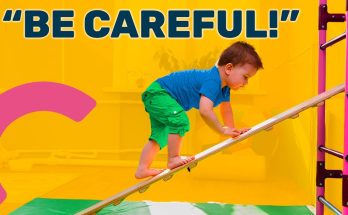Crawling is a major milestone in your baby’s development. It strengthens muscles, improves coordination, and prepares your baby for walking. While some babies skip crawling altogether, most go through several stages before they master this important skill. Understanding the six stages of crawling and how to support your baby through them can make the process smoother and more enjoyable.
Stage 1: Tummy Time (Birth to 3 Months)
What Happens?
Before your baby can crawl, they need to build the strength to support their body. Tummy time is crucial for developing neck, shoulder, and arm muscles. At first, your baby may struggle and only lift their head for short periods, but over time, they’ll become stronger and more comfortable in this position.
How to Help:
- Start with short tummy time sessions (a few minutes at a time) and gradually increase the duration.
- Use toys, mirrors, or your face to encourage your baby to lift their head.
- Try placing your baby on your chest or lap if they resist tummy time on the floor.
- Make tummy time fun by incorporating songs, gentle massages, and interactive play.
Stage 2: Rolling Over (3 to 6 Months)
What Happens?
As your baby gains more control over their muscles, they begin rolling from back to tummy and tummy to back. Rolling is an important step in developing the core strength needed for crawling.
How to Help:
- Encourage rolling by placing toys just out of reach to motivate movement.
- Help your baby practice by gently guiding their legs and hips to roll over.
- Give plenty of floor time on a safe, firm surface to allow free movement.
Stage 3: Rocking on Hands and Knees (5 to 8 Months)
What Happens?
Your baby will begin pushing up onto their hands and knees, rocking back and forth. This movement helps them learn balance and weight shifting—key skills for crawling.
How to Help:
- Place a soft mat or rug on the floor for support.
- Position toys in front of your baby to encourage reaching and movement.
- Gently support their belly with your hands or a rolled-up towel to help them stay in the hands-and-knees position.
Stage 4: Army Crawling (6 to 9 Months)
What Happens?
Before mastering hands-and-knees crawling, many babies start with an “army crawl,” where they drag their belly on the floor while pulling themselves forward with their arms.
How to Help:
- Place enticing toys just a little out of reach to motivate forward movement.
- Encourage your baby by getting down on the floor and crawling alongside them.
- Use a towel or small pillow under their belly for extra support.
Stage 5: Classic Hands-and-Knees Crawling (7 to 10 Months)
What Happens?
At this stage, your baby learns to coordinate their arms and legs to move forward on their hands and knees. This is the most common crawling style and an exciting milestone!
How to Help:
- Create a safe and open space for crawling by removing obstacles.
- Use a tunnel or play area to make crawling fun and engaging.
- Encourage your baby with clapping, cheering, and positive reinforcement.
Stage 6: Advanced Crawling and Exploration (8 to 12 Months)
What Happens?
Once your baby gains confidence in crawling, they’ll start exploring their surroundings. They may begin crawling faster, climbing stairs, or pulling up to stand.
How to Help:
- Baby-proof your home by securing furniture and blocking unsafe areas.
- Provide sturdy objects for your baby to pull up on.
- Let them practice crawling over pillows or soft obstacles to build strength and coordination.
Final Thoughts
Every baby develops at their own pace, and some may skip certain stages or find their own unique way of crawling. By creating a safe, encouraging environment and engaging with your baby through each phase, you can help them succeed in reaching this important milestone. Before you know it, they’ll be on the move and ready for the next big step—walking



